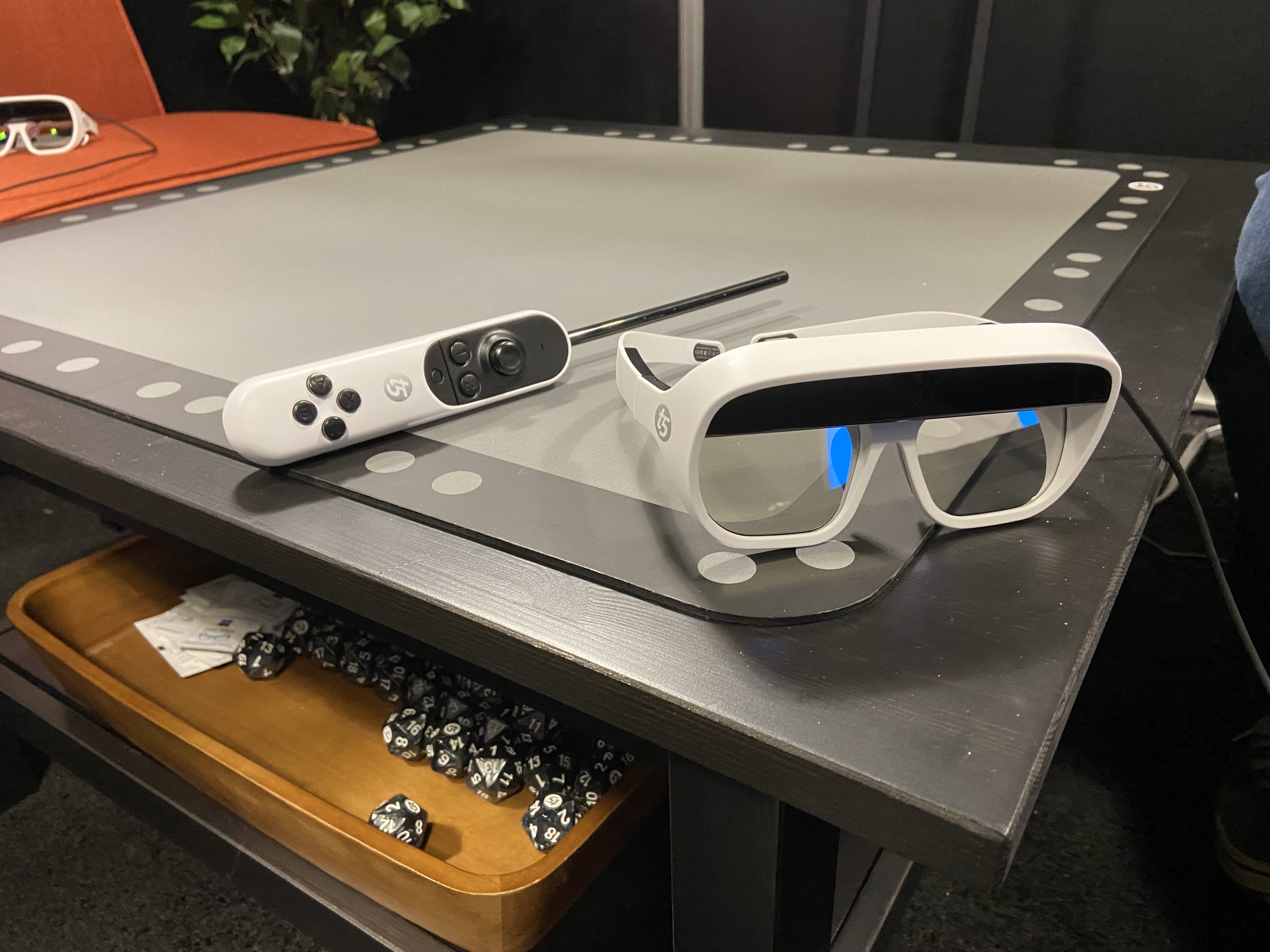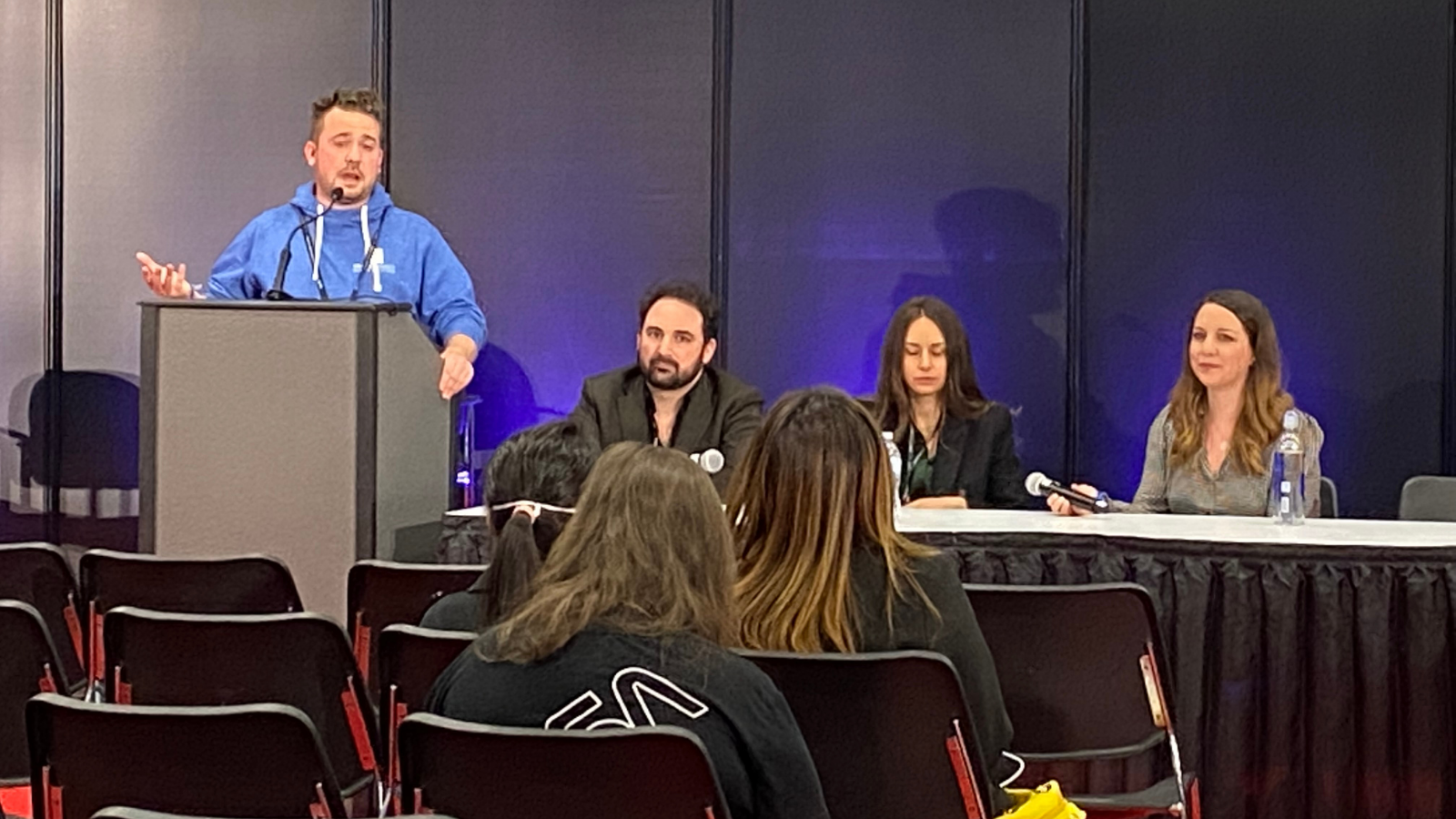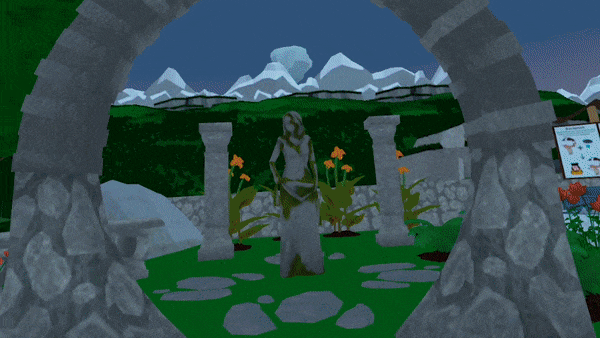GDC 2022: DAY 4

Written by Nick Foster
Game Developers Conference (GDC) 2022 may be nearing its end, but things are definitely not winding down! The fourth day of GDC was packed with inspiring hardware demos and even more game-changing presentations from some of gaming’s most creative minds. Read on for our favorite parts of GDC day four and a huge Loam Sandbox surprise!


Building Next-Gen Games for PlayStation VR2 with Unity
On day four, I went to an interesting talk presented by Unity regarding its support for PlaystationVR2 games. It highlighted new PSVR2 features like eye-tracking and Foveated Rendering while detailing how Unity will implement them. While much of the talk focused on PSVR2’s exclusive features, it also explored Unity’s broader features and what we can expect regarding game development on the system moving forward.
While URP and Single-Pass rendering have been talked about ad nauseam, I find explanations for some of their advanced uses to be fascinating. For example, I know that you can make a custom rendering pipeline for URP, but I didn’t consider that I could have a pipeline focused solely on UI which can be run separately from everything else.


Tilt Five uses AR-enabled glasses and a unique controller to breathe life into our favorite table-top board games.
I also walked around the GDC Expo Hall and saw innovative games with alternative control schemes. The artistry and creativity on display really encouraged me to find new and novel ways to play.
The MAW: Safely Multithreading the Deterministic Gameplay of ‘Age of Empires IV’


Joel Pritchett (Technical Director of Age of Empires Franchise, Microsoft) details the multithreading, debugging, and verification tools built into the game’s engine.
Age of Empires is a large-scale game featuring many, many different units and entities. Whether you are running the game on a single-core CPU or a massive gaming PC, the sim game must always produce a similar experience, so lots of thought went into designing the game’s engine to adhere to this requirement. The game’s developers parallelize units by grouping them into islands — these are groups of units that need to know about one another but not about other islands.
RTSs used deterministic input syncing, and it usually worked fine: the peers agree on input and return the same result. The issue with multithreading, however, is that it was possible for threads to start or stop at different times in different machines, making it potentially non-deterministic. The developers resolved this issue by recording read/write records on data in the engine; if there were any conflicts between peers, they could detect those errors. With this in place, developers could just write code, and whenever they wrote code that would create desyncs, they were automatically and immediately caught.
Understanding Developer Challenges with Localization, Player Support, and More


My pick isn’t from day four but rather the end of day three. Annie, the executive producer at Amebous Labs, joined the TransPerfect panel with host Alexander Fletcher (Global Director, TransPerfect Gaming Solutions) and co-panelists Xavier Marot (Director of Production, Focus Home Interactive) and Ninel Anderson (CEO, Devoted Studios).
Together, they shared an insightful discussion regarding how developers can create a seamless experience for players from all over the world. Ninel suggested tapping into the community of players that speak the language you’ve translated your game into and trading them game keys for feedback. Taking this step will not only help the developers, but it will make the players feel heard as they offer advice on how to appropriately translate content for their audience.
Annie shared ways to avoid using text in virtual reality, as it is inherently difficult to read large amounts of it in virtual reality. She suggested using iconography and visual diagrams to assist the player in successfully maneuvering throughout a VR game.
Hardware Demo: Tilt Five


Amy and Pierce play an AR board game on the Tilt Five.
We got to have a private demo of Tilt Five, an augmented reality wearable for tabletop games. The weight of this device was lighter than other HMDs and the field of view is impressive (especially for the weight). I think we’ll be putting an order in for a couple of these so that we can experiment with creating content for this device!





